 Peter Hayes start with his usual quick summary:  “I have several Carenado GA planes in my virtual hangar and the Saratoga makes it number 8. Carenado makes good solid basic GA planes and the Saratoga is no exception. There has been some criticism in the forums about the “sameness” of the gauges in the Carenado planes and the fact that they do not have advanced features, e.g., wearing out/damaged engines, maintenance, etc, such as in the A2A J3 Cub. However, I take a pragmatic view, when reviewing 3rd party aircraft, and write the review based on the fact that this might be the only Carenado plane that I have purchased and judged solely on its merits.
Peter Hayes start with his usual quick summary:  “I have several Carenado GA planes in my virtual hangar and the Saratoga makes it number 8. Carenado makes good solid basic GA planes and the Saratoga is no exception. There has been some criticism in the forums about the “sameness” of the gauges in the Carenado planes and the fact that they do not have advanced features, e.g., wearing out/damaged engines, maintenance, etc, such as in the A2A J3 Cub. However, I take a pragmatic view, when reviewing 3rd party aircraft, and write the review based on the fact that this might be the only Carenado plane that I have purchased and judged solely on its merits.
The Saratoga handles very well, the sounds are very good, but the manuals are perfunctory to say the least. It is a good, if not outstanding GA plane, and it has quite appealing visual effects. On the whole, I found it to be a reasonable GA plane, but with lots of room for improvement in several areas.”  Continue reading the in dept review.
In the Sim
Installation was painless with a self extracting “exe” file and there was no memory defying alphanumeric “key” to insert.
Settings: On my system in the Select aircraft menu in FSX under “Publisher” I was presented with the tab for “Carenado” and this allows the choice of all 4 plus 1 Saratoga repaints. My flight control settings are full right — as realistic as you can get.
The Guide: There is no manual as such and this does detract slightly from this plane. Carenado don’t usually supply flight manuals but rather, a series of leaflets/checklists. In the case of the Saratoga you get 4 documents/booklets:
- A Checklist & Normal Procedures Booklet:
- A Virtual Cockpit Operation Sheet
- A PA-32R-301 Reference Sheet
- A Century II Autopilot Flight System Leaflet
These are concise but do not convey any “interesting” extra information on the Saratoga. Some have quite small print and may make these difficult for venerable pilots (like myself) to read, particularly in poor light. Having said that, they do convey, in an effective “word economic model” lots of information about the features of, and how to operate, this plane. But having 4 manuals is “messy” and it would have been nice to see them combined into 1 comprehensive document. The main document, “Checklist & Normal Procedures” covers every aspect on the Saratoga from the “Cockpit Pre-Flight Check” to “Spin Recovery”, but there is quite a lot of wasted space and it could have easily been condensed to half its size. It also seems to describe procedures that may not have been included in the Sim model.
The Viz
The models are up to the usual Carenado standard with very good quality inside and out. The modelling makes the most of the FSX features and look very good in “DX10 Preview” mode. The seats, handles, buttons, gauges, wheels all look realistic and are quite clear.  Some of the gauges do not “pop-up” when clicked, so if you need to read a particular gauge (without Track IR, and there are NO 2D panels) you have to “pop-up” or zoom in on the gauge and that can be quite” hairy” when you are on final approach or attempting a complicated manoeuvre.Â
There are 4 nice repaints representing the type of paints that you might have seen over 4 decades from the 1970’s to the 2000’s. There is also a “White” repaint with no markings presumably for the simmer to add his/her own repaint scheme. However, the internal cockpit panels/instruments do not seem to reflect the repaint decade being all the same and not updated to reflect the advances made over 40 years in aircraft instrumentation. Apparently Carenado have modelled a 1980’s to 90’s variant of the Saratoga for the exterior, but equipped all repaints with instruments from a previous era (e.g., the Autopilot is from the 60’s and 70’s, later builds had much more sophisticated autopilots). I should stress that all the planes you get are exactly the same inside and out except for the paint jobs and ID numbers.
Piper Saratoga Repaints:
 Figure 6 Saratoga “WHITE” Paint
Figure 6 Saratoga “WHITE” Paint
The doors open and close, and there is a “tread” strip on the wing allowing access to the plane. There are several doors that open and close, i.e. pilot/co-pilot access, passenger door, forward and rear luggage doors, but inexplicably these are not documented in the literature. Shift E +1 to 4 opens and closes the doors. Night lighting in the cockpit looked good and the single landing light seemed to be modelled accurately.
 Figure 7 Saratoga Entry Door and Access strip
Figure 7 Saratoga Entry Door and Access strip
 Figure 8 Saratoga Passenger door and rear luggage
Figure 8 Saratoga Passenger door and rear luggage
 Figure 9 Saratoga Front Luggage Compartment
Figure 9 Saratoga Front Luggage Compartment
 Figure 10 Saratoga VC night Lighting
Figure 10 Saratoga VC night Lighting
The Saratoga is a six seat, low wing, metal constructed aircraft, powered usually by a 300 HP Lycoming O-540 engine with a 3 blades variable pitch propeller and retractable “tricycle” landing gear. Although this is not a “tail-dragger”, there is limited forward visibility, due to a combination of the long nose and high dashboard.  Apparently in real life versions that also have overhead switches reduce the visibility even more. I’m glad I was using a TrackIR, because as you climb you can see very little of what is in front of you.
 Figure 11 Close up showing 3-bladed propeller and Interior.
Figure 11 Close up showing 3-bladed propeller and Interior.
On normal fuel usage (approx 20 US gallons/Hr) you can fly for around 5 hours, i.e. around 750 NM or with a real-life 1 hour reserve 650 NM — very reasonable for a single engine fast plane and capable of carrying 6 people in relative comfort. (Note: With 6 people onboard and full fuel tanks would mean that the plane was over the maximum take-off weight.)
I did not see any significant drop in performance (frame rates) in FSX in this plane.
3rd Party Repaints
I couldn’t find many repaints out there including a search on the AVSIM library.
Instruments in the Interior:
There is one and only one cockpit layout for the 4 + 1 repaints.  This depicts the usual avionics/navigation instruments and a quite archaic “Century II Autopilot”  Many of the main pilot-side gauges “pop-up” when clicked (including the GPS, so that you can see them more easily in flight. Some simmers have reported that the clickable areas in the VC were “hit or miss”, but I found that on the whole they worked reasonably well. The “VC Operation” Leaflet annotates all 34 gauges, levers (axes) buttons, etc depicted.  It shows an enlarged version of the auto-pilot and highlights the “toggle” area. It also shows without explanation (as to their location), the below left window mounted switch panel and elevator trim control. The gauges were reasonably clear and displayed fine at night (see Figure 10).
 Figure 14 Collins radio GPS/NAV Switch
Figure 14 Collins radio GPS/NAV Switch
 Figure 15 VC Showing GPS Close-Up
Figure 15 VC Showing GPS Close-Up
 Figure 17 Throttle, Prop, Mixture Controls and Tachometer
Figure 17 Throttle, Prop, Mixture Controls and Tachometer
The Below Window Switch panel controls the
- Master Switch
- Fuel Pump
- Anti-collision lights
- Landing Lights and
- Pitot Heat
 Figure 18 Below window switch panel and Window Vent
Figure 18 Below window switch panel and Window Vent
If you hit F10 there is no 2-D panel but you do get an unrestricted view forward with an on-screen notation stating that Shift + 1 toggles the main instruments, and so on and that “A” returns you to the VC Panel.
Some of the gauges included, e.g., “Gyro Pressure” gauge are not described or annotated in the manual (see Figure 26). There is no mention in any checklist to monitor this gauge or what to do it if it fails, and one would have thought that it rated a mention as its function is fairly vital to safe operation of some of the instruments in the plane.
The Century III 3 axis Auto Pilot:
This controls the Heading, Roll (aileron), Pitch and Altitude Hold. You can engage the latter when you get to your flying altitude, but you cannot set an altitude and fly up to the height. There is also a “NAV” mode so that you can fly any flight plan that you have entered into FSX. In the simulator some of the real-life functions have been merged so that they are not modelled as they would be in a real plane. Now, this is a very basic autopilot with limited functionality (an assassin in the cockpit as opined by one pilot). It was also described by the same real-life pilot as “the worst auto-pilot known to aviation”. Praise indeed! Apparently in real life malfunctions with this autopilot are the norm, with unexpected heart-stopping spiral dives on engaging, or rapid climbs to a stall and/or “random disconnects or refusal to do so.” Now if only Carenado had modelled it like that! This is a quote from the above real-life pilot, “Alzheimer’s – Holds heading and height for a while then forgets what it was doing and wanders.” Sounds like my flying!!
However in the Sim, I found that the autopilot was relatively easy to use. I filed a FSX flight plan from Page Arizona to Grand Canyon National Park (KGCN), reached a height of 7,000’ set the Altitude Hold and the AP to Nav, and it followed the course without deviation even when I set up a 15KIAS cross wind and a violent thunderstorm. On a longer flight (4 Hours) I suddenly found that I was flying with one wing lower than the other and then remembered on this plane you have to switch fuel tanks manually in order to maintain balance in the plane.
One nice touch is that both yokes can be toggled on/off allowing better visual access to the instruments.
The Payload
These are set within the Sim but you cannot load 5 passengers only 3, and you cannot load the rear luggage. With a pilot and 3 passengers and full fuel you have very little left in the way of luggage. Fully loaded the Saratoga becomes very heavy and takes a lot longer to get off the ground. It would be interesting to see if it could fly with 5 passengers plus the pilot on board.
 Figure 22 Payload showing 3 Passengers only
Figure 22 Payload showing 3 Passengers only
In the air
The engine can be started manually, or Ctrl + E also works. I set all my controls in FSX to realistic ie to the far right. Initially I had trouble in taking off.  I couldn’t get enough power to rotate but after installing the mixture patch this was fixed. Taxiing is easy, using engine, rudder and brakes to make turns, and although forward vision is restricted you can still taxi from the ramp to the runway without hitting too many objects that might be in your way. The Saratoga takes a bit of time to lift off so this is not a real STOL plane, but it’s great for quick comfortable cross country flying. Once airborne (lift-off is around 80KIAS depending on load, flaps, etc) it climbs rapidly and easily and then cruises effortlessly at around 150 KIAS. It gets to its ceiling of 15000+’ in around 35 – 40 minutes with full fuel with no passengers. It was easy to trim for level flight using the throttle and elevator trim. There is no handling difference that I could see between the 4 repaints. It feels quite heavy in the air, and I needed a fair amount of elevator trim to get it to fly straight and level as it felt quite nose-heavy. I tried a power-off landing on final at 1,000’ speed 80 KIAS (best glide speed) and although the controls felt heavy and unresponsive we landed fairly well. I did not notice any excessive torque effect on take-off.
 Figure 23 In Flight toward the Grand Canyon
Figure 23 In Flight toward the Grand Canyon
Stalls
Inducing a stall was relatively easy to induce and for recovery I used the “spin Recovery” feature from the Checklist booklet, and the recovery was uneventful.
Landing
This plane can land (with gear down and with one notch of flaps) at around 95 — 100 KIAS so you come in relatively fast. On short fields with full flaps I landed around 75 — 80 KIAS which still seemed very fast compared to the Cub. I tried one 130 KIAS landing and bounced off the runway and buried the propeller in the grass!! However, after a few more mishaps I found that you could land very fast in this plane. I did have a lot of problems slowing the plane down for landing, it took a long time to bleed off the extra speed say from 150KIAS down to 95 KIAS, and the flaps could not be used before I reached around 112 KIAS. Apparently in real life this is also a problem because as you reduce the throttle to idle, this action creates a real risk of shock-cooling the engine with subsequent (terminal) damage.
 Figure 24 Landing Imminent PNG
Figure 24 Landing Imminent PNG
Sounds
The sounds are good being based on a “real-life” Saratoga, the flaps sound is a click, but the gear makes satisfying clunk when retracted. I’m not sure what sound to expect for flaps extend/retract, so I can’t comment as to the “reality” of the sound I heard in the Sim.
Miscellaneous
Included in the models is a white repaint, presumably for painting your own variants. Dual flight controls are provided as standard equipment in the “real-world” Saratoga and these are modelled by Carenado.
Summing Up: Superficially, the Saratoga is a very good looking plane, nice handling, great sounds and nice detail, but it lacks a few basic features that could have made it into a great flying simmer. It would be nice to see a variant with a 1990’s/2000’s instrument panel, i.e. updated avionics, navigation and auto-pilot systems. I also feel that there needs to be more input into the manuals, so that the features of the plane are described and annotated appropriately. A good GA plane that is possibly in need of a quick make-over.
WOW Factor: 6½/10
Peter Hayes
Australia, December 2009.
Development: According to Wikipedia, the Saratoga is a development of the Piper Lance, which was basically a Piper Cherokee with retractable gear. Later models are known as Saratogas. The primary difference between the Lance and early Saratoga is the replacement of the T-Tail with a “standard” tail making the plane easier to handle and land. Production of the Saratoga, as a turbo charged model, was discontinued in 2009, with the “SP” version being discontinued several years earlier around 1993 (being replaced by the “HP” – production ceased in 2007)..
Trivia: John F. Kennedy, Jr., his wife, and sister-in-law were killed on July 16, 1999, when the Saratoga Kennedy was flying crashed into the Atlantic Ocean, just seven miles off the coast of Martha’s Vineyard. (Wikipedia)
Table of the Important Bits:
|
Publisher: |
Carenado |
|
Supplier: |
simMarket by direct download. |
|
Download |
67+MB (zip file) |
|
Installation |
68.5 MB “exe” file Expands to 278MB |
|
Simulator Requirement: |
FSX supports SP2 (or Acceleration/Gold) and DX10; |
|
OS Requirements: |
Win XP, Vista and/or Win 7; |
|
Variants: |
N/A |
|
Paint Schemes |
4 Different paint schemes representing the1970’s; 1980’s; 1990’s and 2000’s, plus a “white” repaint for repainting – I guess. |
|
Cockpit |
3D (VC) only |
|
Supplementary: |
N/A |
|
Testing System: |
Intel E8600, 4GB DDR 800 RAM, Vista 64 SP2, nVidia 9800 GT, 182.50 Driver; |
|
Scenery: |
FSX standard, GEXn, UTX, FSGenesis LC/Mesh; X-Graphics; Bush Pilot/Trecker PNG Scenery, Holger Mesh Grand Canyon |
|
Installation: |
Installation is simplicity itself being automatic via a self extracting exe file. Should be installed with Admin rights — VISTA right click “Run as administrator”. |
|
Manuals / Documentation |
Not as such but includes: Comprehensive checklists and reference texts about the procedures and autopilot |
|
Support: |
|
|
Forum: |
N/A |
|
Updates |
Small Patches now incorporated in the latest downloads to correct mixture, ignition key visibility and erratic ADF needle problems. |
Performance Specifications (ref: Wikipedia & Carenado)
|
Horsepower: 300 (223 Kw) |
Gross Weight: 3600 lbs (1640 Kg) |
|
Top Speed: 163 KIAS (300 km/hr) |
Empty Weight: 1999 lbs (910 Kg) |
|
Never Exceed: 197 KIAS (365 Km/Hr) |
|
|
Cruise Speed: 158 KIAS (290 Km/hr) |
Fuel Capacity: 102 gal (380 L) |
|
Stall Speed (dirty): 57 KIAS (105 Km/Hr) |
Range: 784 nm (1450 Km) |
|
Manoeuvring Speed: |
Maximum Flap Extended Speed |
|
Maximum Landing Gear Down Speed |
Maximum Landing Gear Up Speed |
|
Takeoff |
Landing |
|
Ground Roll: 1013 ft (308 m) |
Ground Roll 732 ft (223 m) |
|
Over 50 ft obstacle: 1573 ft (480 m) |
Over 50 ft obstacle: 1612 ft (490 m) |
|
|
|
|
Rate Of Climb: 1116 fpm (340m/min) |
Best Rate of Climb (No flaps, Gear Up) |
|
Ceiling: 15588 ft (4750 m) |
 Figure 26 Fire Extinguisher, Door Handle
Figure 26 Fire Extinguisher, Door Handle
 Figure 28 Interior Showing Curtains and Coach Seats
Figure 28 Interior Showing Curtains and Coach Seats
Â















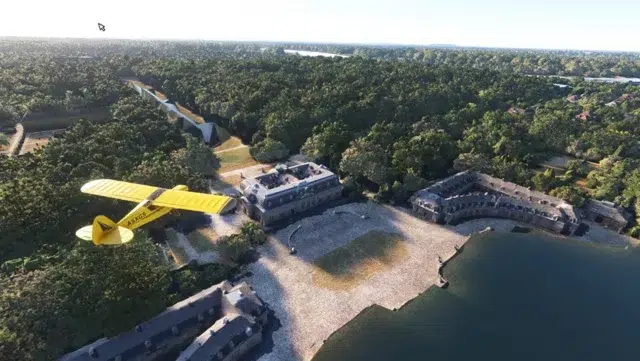
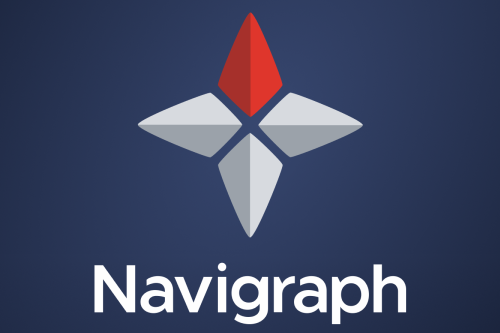
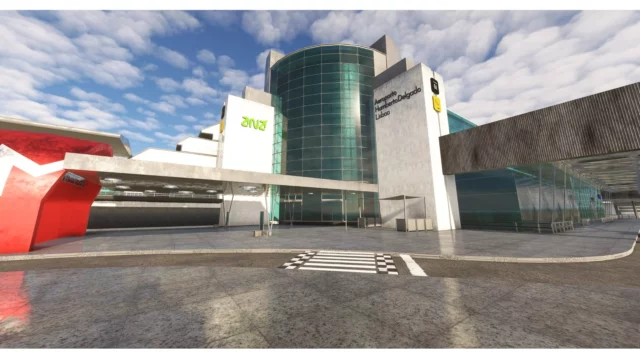
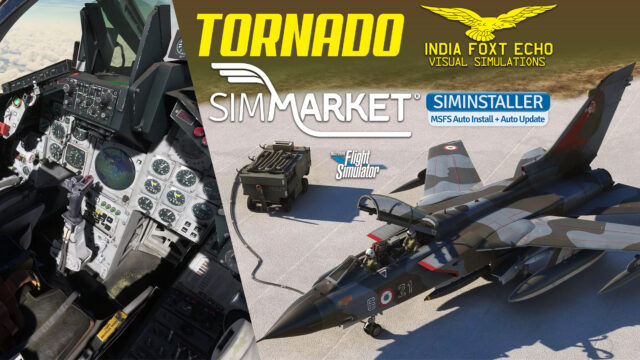
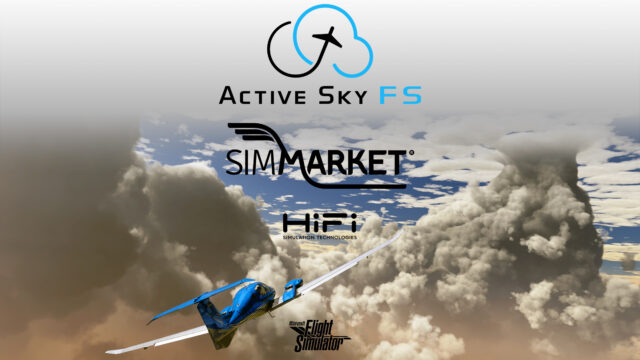
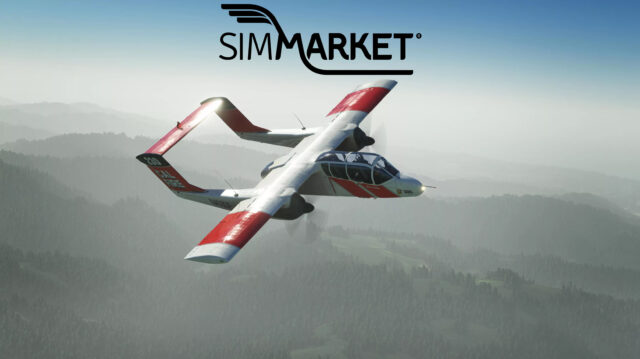
0 Responses
I would like to see Caranado(and others) use factory looking(size, font style) “N” numbers on their otherwise “Beautiful” creations 🙂
As to seeing an updated instrument panel, I think that the idea was to release the Saratoga as it was when it first came out of the factory. This captures what the Saratoga was really like including avionics and instrumentation.